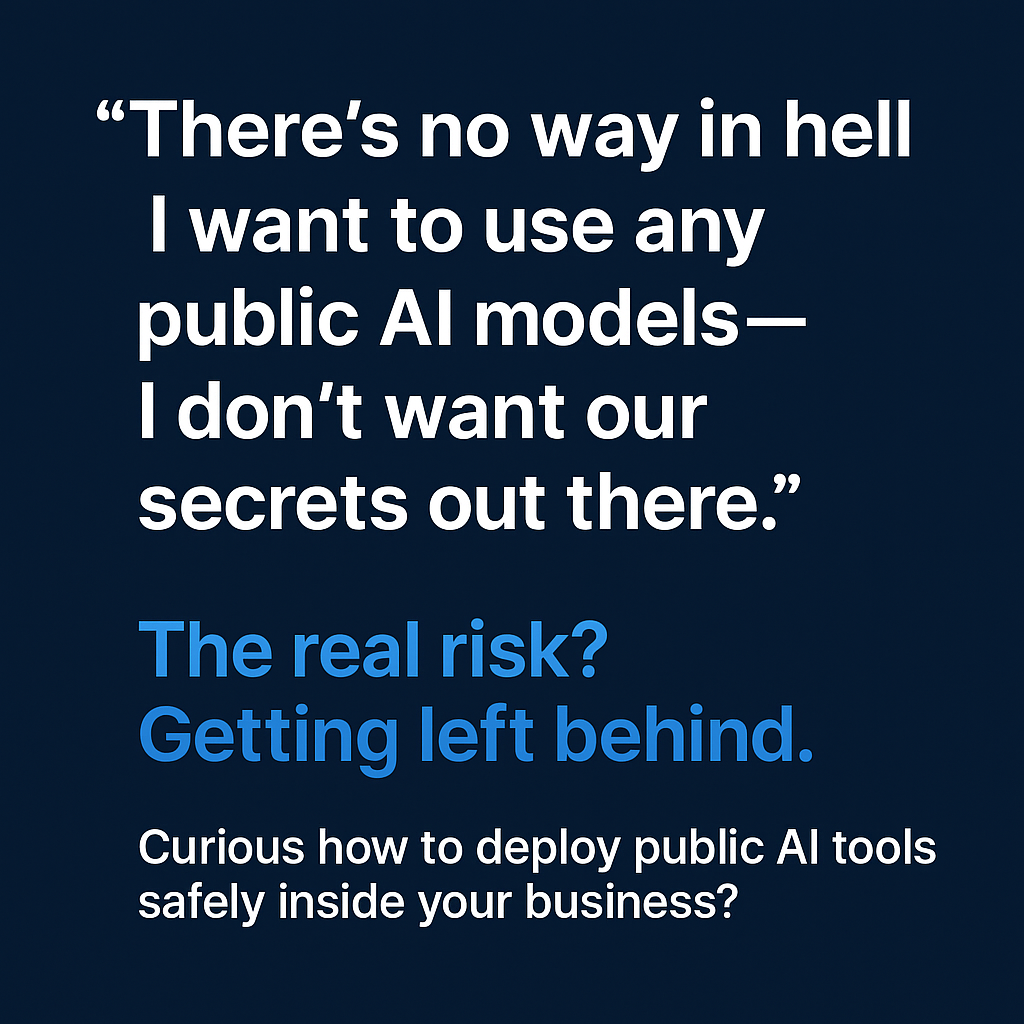What Every CEO Needs to Know About Public AI and Data Privacy

I was talking recently with the CEO of a private company doing over $300 million a year in revenue. He said flatly, “There’s no way in hell I want to use any of the AI models that are publicly available, because I don’t want our secrets out there.”
That sentiment isn’t uncommon. I’ve heard it echoed by other CEOs, CFOs, business owners—even IT directors. But there’s a gap between perception and reality when it comes to data privacy with public AI models.
The Reality: Where Your Data Actually Lives
Many people don’t realize that the foundation models—ChatGPT, Anthropic’s Claude, Google Gemini, Microsoft Copilot—are hosted in the same enterprise-grade data centers as your Microsoft 365 or Google Workspace environments. For instance, ChatGPT runs on Microsoft Azure, the same infrastructure that handles corporate email and documents for thousands of businesses.
Each provider also offers data privacy controls:
- Google Gemini: You can opt out of training via Gemini Apps Activity settings.
- OpenAI/ChatGPT: You can turn off chat history to prevent your data from being used for training.
- Claude (Anthropic): Doesn’t train on your data by default—it’s opt-in only.
In most cases, these models follow the same privacy standards your company already relies on in other tools.
The Real Risk: Getting Left Behind
While fear about AI leaking trade secrets is understandable, the bigger risk might be falling behind. Your competitors—whether companies or even individuals competing for the same job—are using AI. They’re building AI centers of excellence, retraining employees, and integrating AI into daily workflows.
It’s not just about keeping your secrets safe—it’s about staying competitive. AI isn’t replacing jobs wholesale, but it is changing how work gets done. The opportunity is to evolve your role to become more strategic by leveraging these tools.
What the Best Companies Are Doing
Take Microsoft, for example. Their CEO recently shared that 20–30% of their code is now generated by AI. They’re tracking it, measuring it, and embracing the productivity it unlocks.
Even public company filings are changing. A couple of years ago, you’d see buzzwords like “AI” or “machine learning” in earnings reports. Now, terms like “LLM” (large language model) are appearing more frequently—because these technologies are becoming core to how modern business operates.
So What Should You Do?
Yes, be thoughtful about where and how you use AI—but also be pragmatic. Every major provider offers controls to manage data privacy. Even the free versions of many tools allow you to opt out of data training.
What isn’t realistic? Avoiding AI entirely out of fear. And unless you’re a large-scale enterprise with a deep bench of machine learning engineers, trying to build your own model from scratch probably isn’t realistic either.
Start by exploring what’s already available. Use AI in your day-to-day work. Understand how it creates efficiencies. That’s how you’ll stay competitive—and keep control of your future.
The companies that thrive won’t be the ones that avoided AI—they’ll be the ones that learned how to use it wisely. The future belongs to those who understand the tools, manage the risks, and lead the change. Which one will you be?
Need help with this? Get in touch.